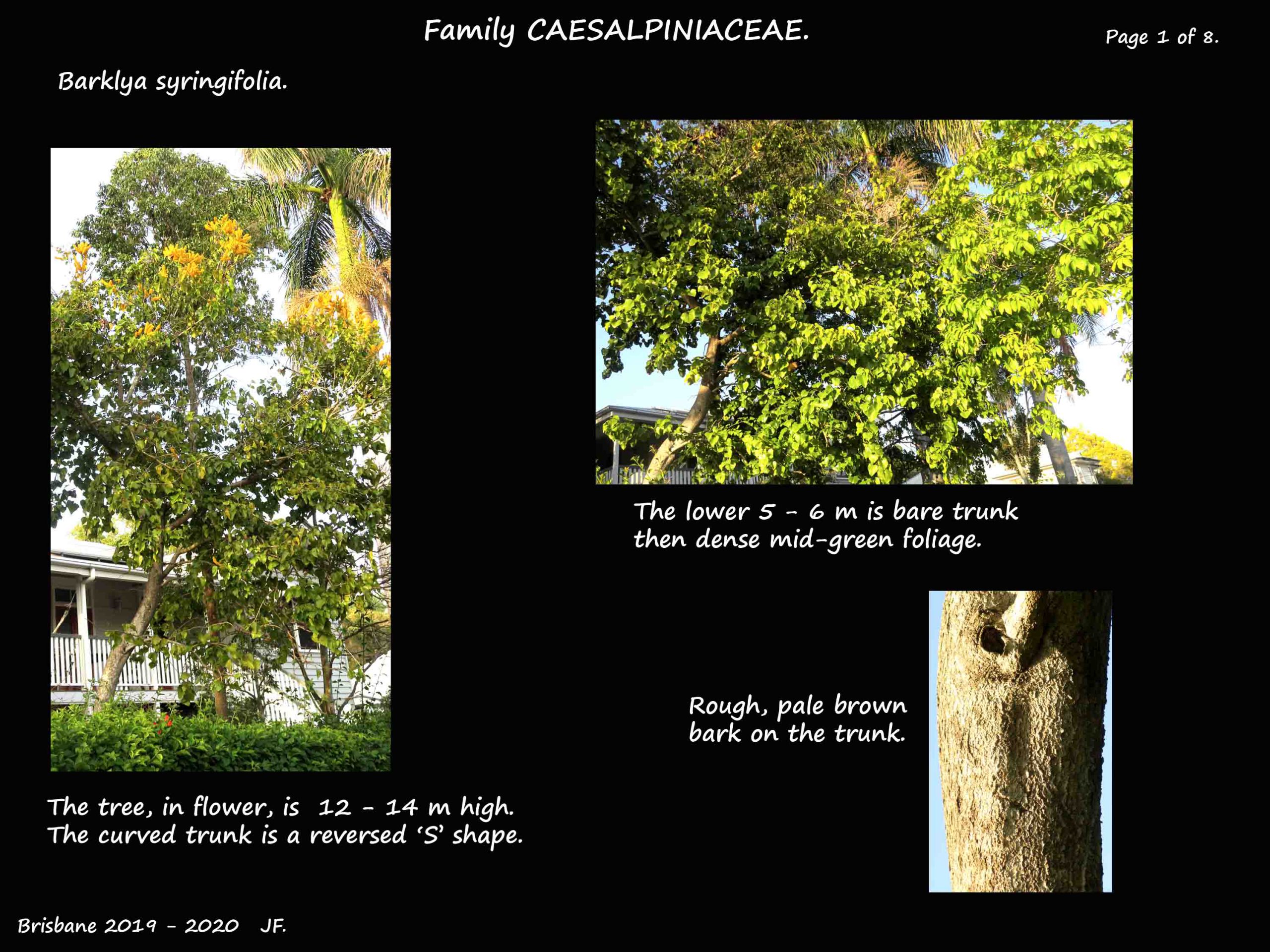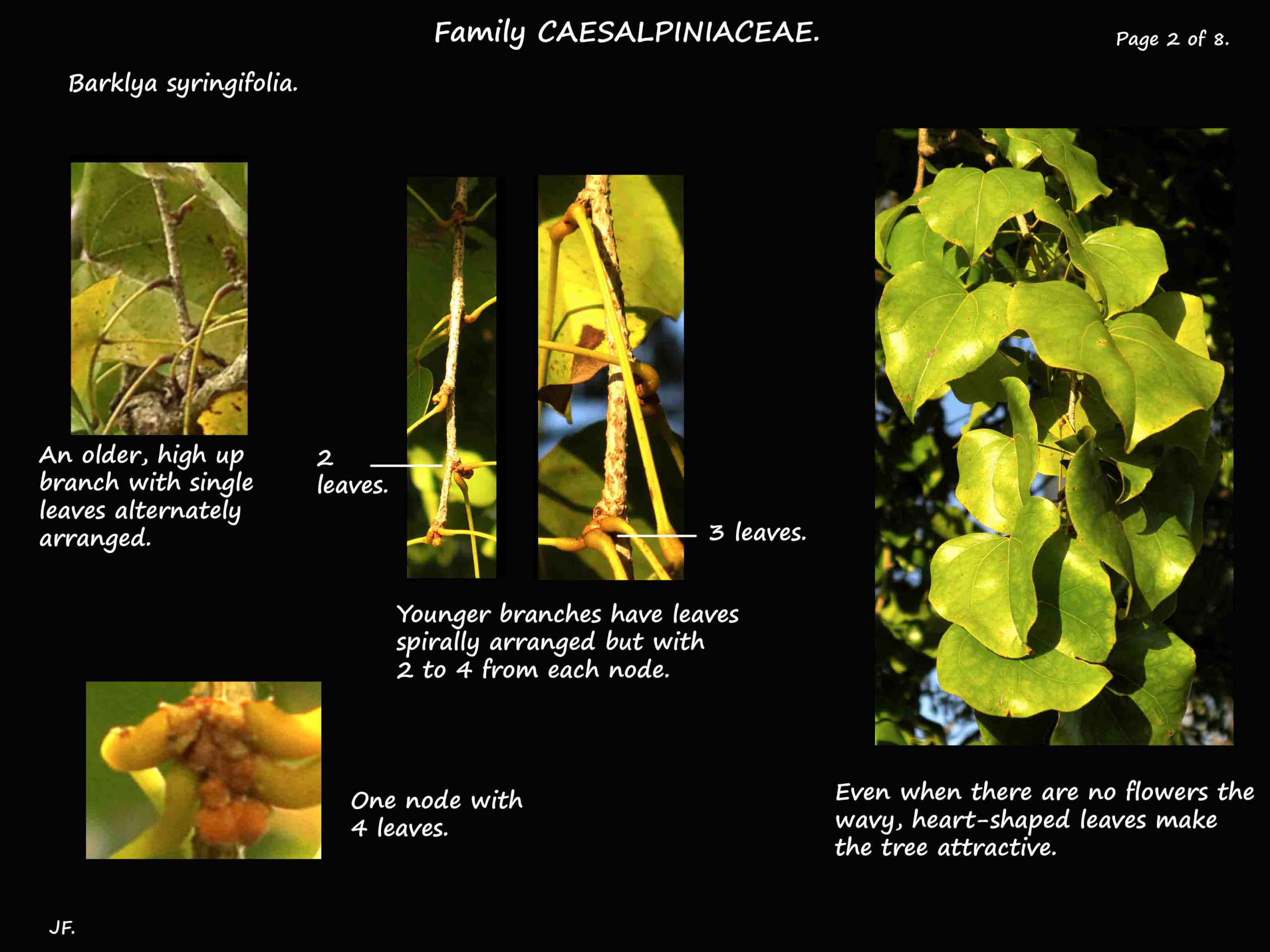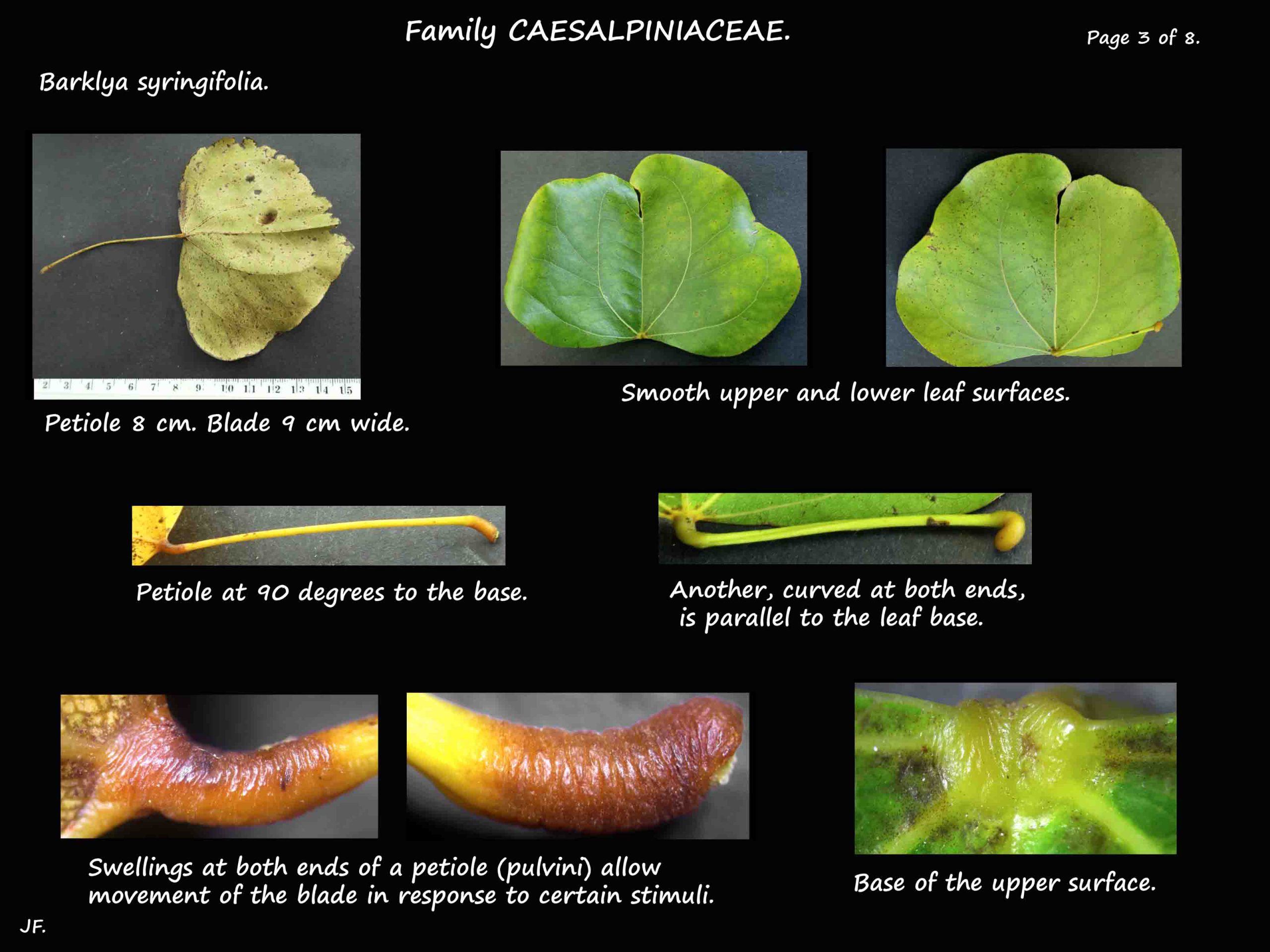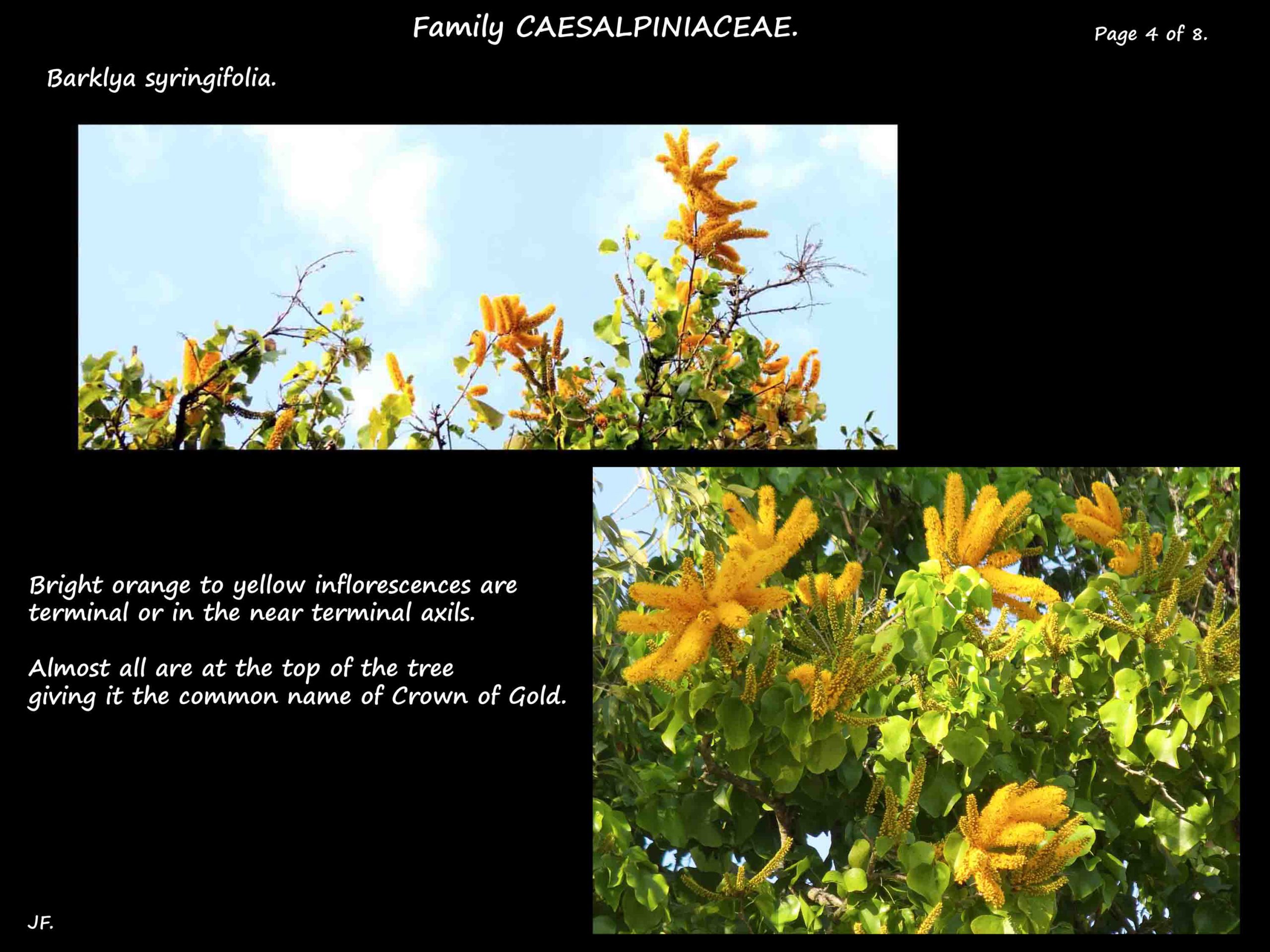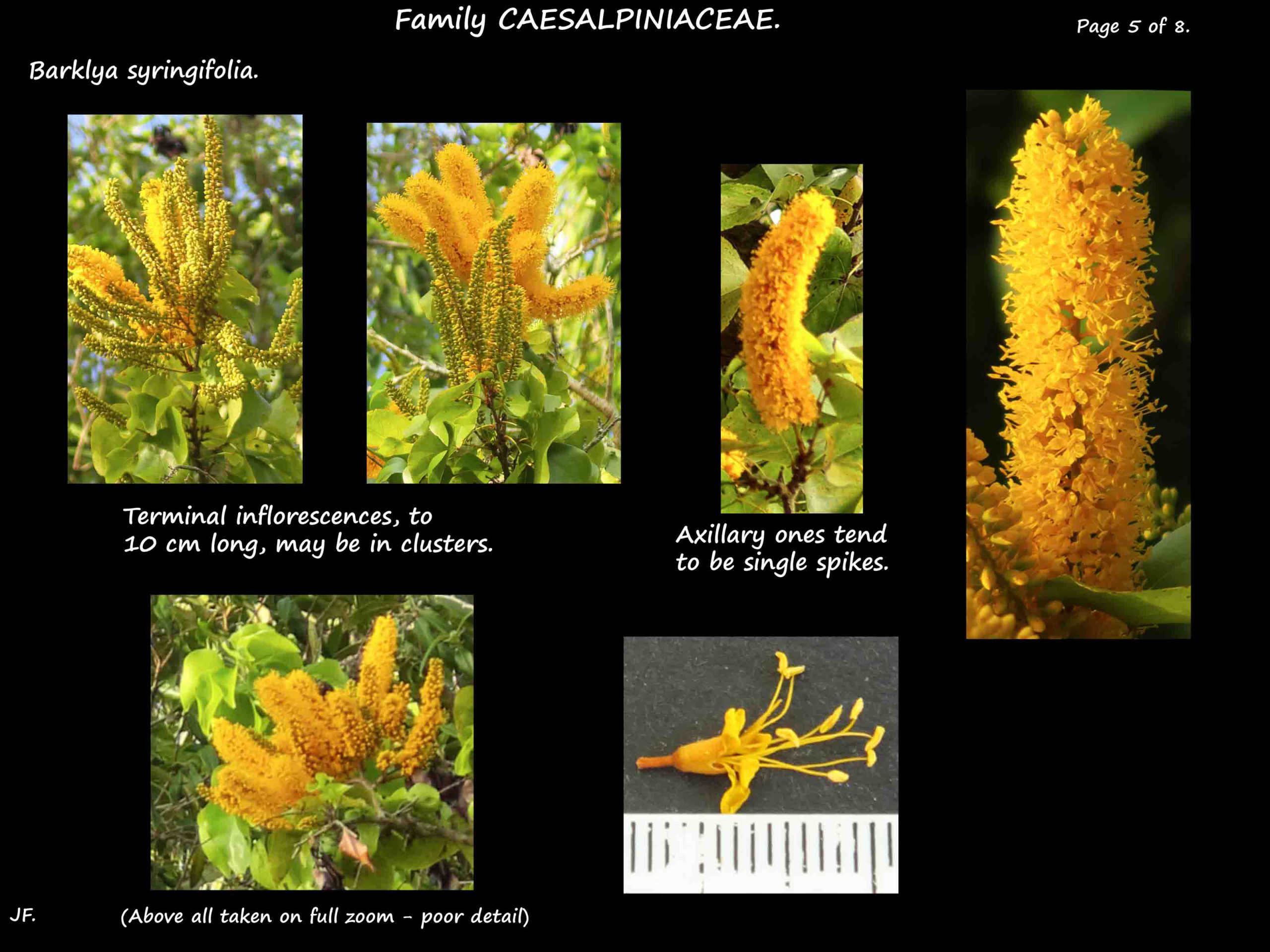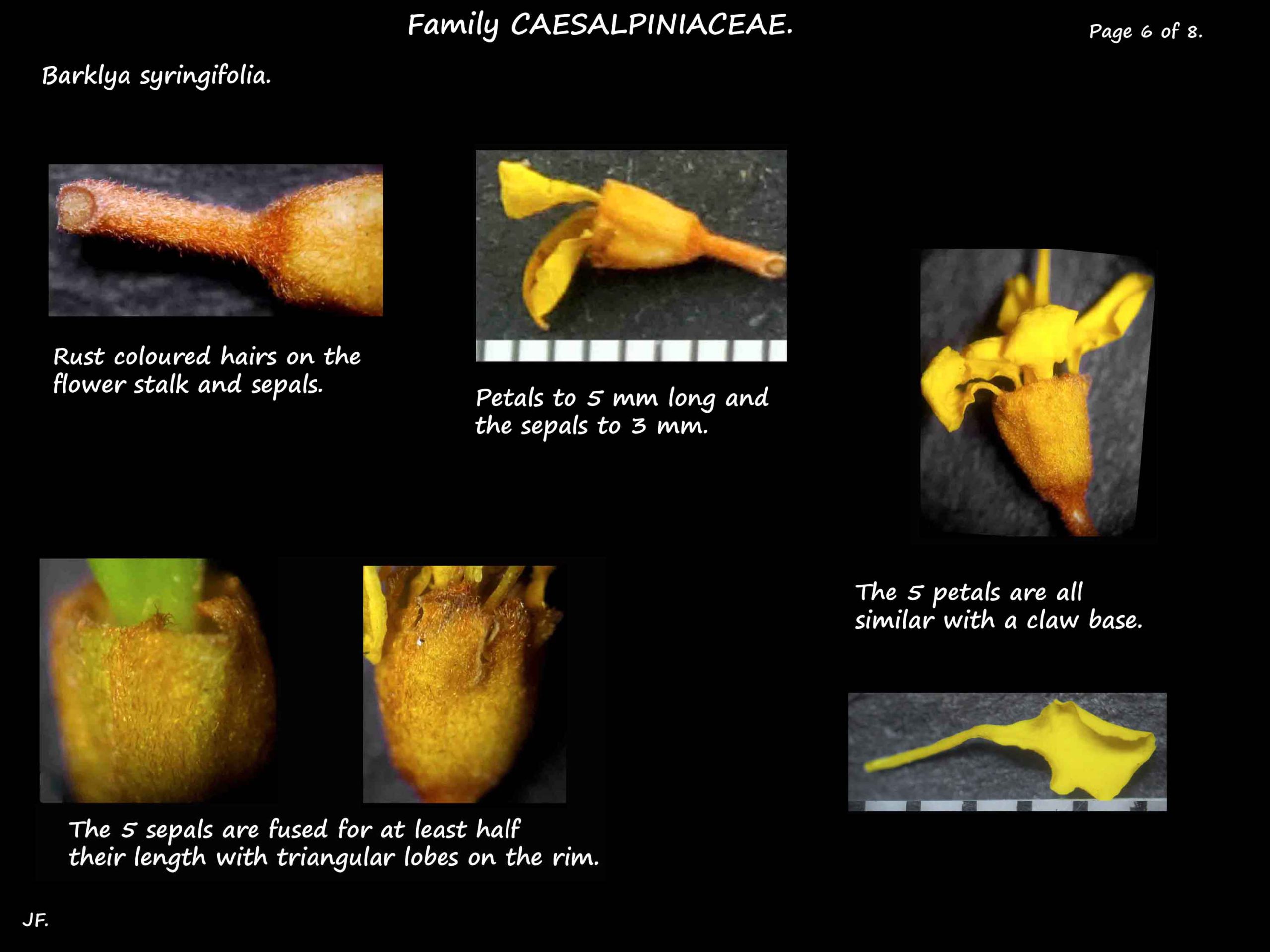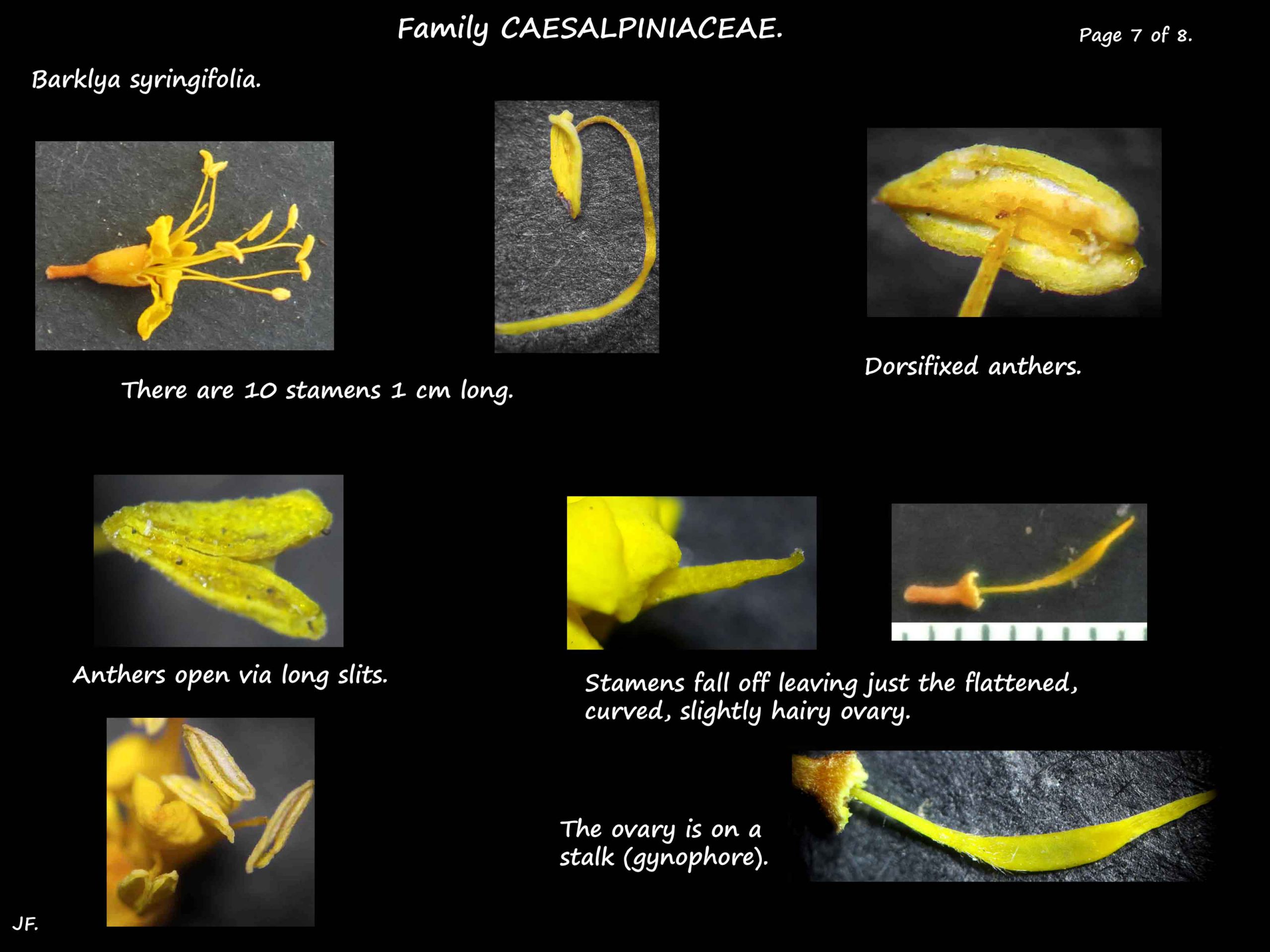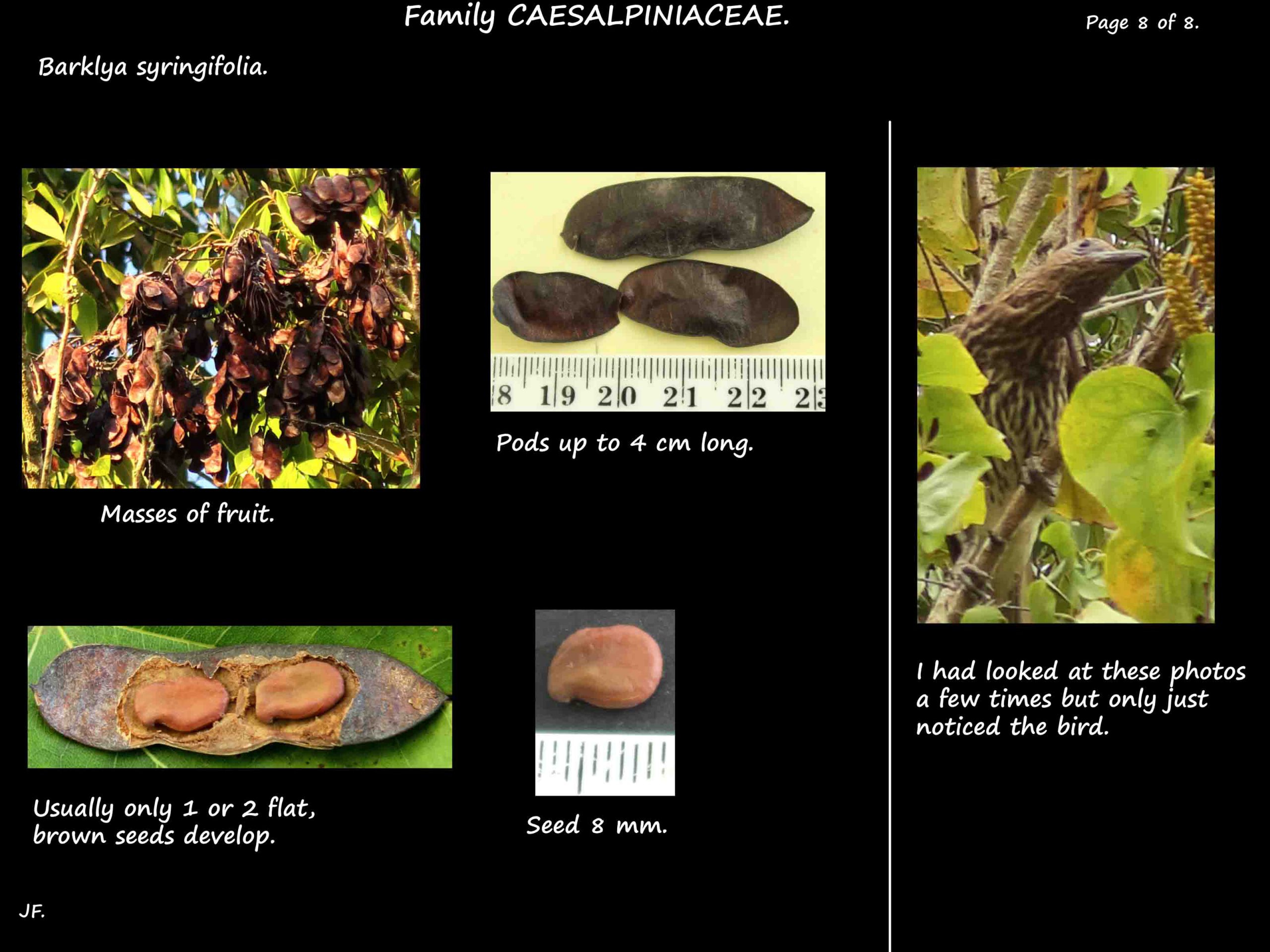Barklya syringifolia.
Family Caesalpiniaceae (subfamily Caesalpinioideae in a loosely defined family Fabaceae).
An Australian genus with only one species known as the Crown of Gold tree.
They are occasionally seen in Brisbane and areas to the north.
They are mostly seen as shrubs to 6 m high but can grow to 20 m high trees.
The heart-shaped leaves are alternately arranged in a spiral.
The petioles, up to 8 cm long, have a swelling or pulvinus at the base.
The ovate blades, up to 9 cm, have a heart-shaped base and a short, pointed tip.
There are 5 to 7 veins radiating from the base.
Young growth, leaves and inflorescences, may have rust-coloured hairs.
Inflorescences, at the top of the tree, are terminal or in the leaf axils.
Up to 10 cm long they are an unbranched spike of closely packed flowers.
There may be from 1 to a few spikes at the end of each branch.
In the axils there is usually only 1 spike.
The individual flower stalks, around 2 mm long, have rust-coloured hairs.
The bisexual flowers have parts in 5’s.
The bell-shaped calyx is 1.5 to 3 mm long.
The lower half or more of the sepals are fused with 5 pointed lobes on the rim.
It is covered in short, rust-coloured hairs.
The orange to yellow petals, around 5 mm long, are all similar.
They have a very narrow or clawed base and an obovate blade with short teeth.
There are 10 free stamens about 1 cm long that extend well past the petals.
The dorsifixed anthers open via long slits.
The superior ovary, on a stalk or gynophore, has a single locule with a few ovules.
The style is short and teh stigma small.
The flattish fruit are up to 4.5 cm long and 1.5 cm wide.
On stalks, they ripen from green to brown.
Each has a 1 – 2 (3) flat, brown seeds.
J.F.
